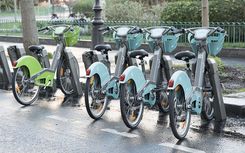Therefore, when a user’s preferred choice of an electric bike is unavailable, it a) impacts the user experience, and b) reduces satisfaction with the service.
These two factors combined lead to lower engagement and lower ridership numbers.
Conclusion
The perception of what operating a mixed fleet will achieve is usually better than the reality. Even though both types of bike are available, the electric bikes are likely to be used much more, to wear out more quickly and to.
The key question to ask when considering a mixed fleet:
Are mechanical bikes going to be popular enough to offset the heightened operational costs that would arise from the over-use of electric bikes?
One way in which you can do this is to have a pricing structure that strikes a good balance between ‘cheap’ mechanical bike rental and ‘expensive’ electric bike usage. This way, you balance the risk of the electric bikes being overused with a financial incentive to use the mechanical bikes, whilst also ensuring that the electric bike pricing is proportional to the higher maintenance costs.
Fully-mechanical
This is when a system is made up of only mechanical bikes. Perhaps it’s had its day?
Pros
+ Budget: A fleet of only mechanical bikes is ideal for a city with a small cycling budget. Mechanical bikes, on average, are cheaper than electric bikes.
+ ‘Active’: A fleet of mechanical bikes is healthier than electric bikes because people need to put in more physical effort to use them.
+ Simpler installation: Even though mechanical bike stations can still require some expensive road works, they don’t need to be connected to the grid, unlike an electric fleet. Electrifying stations can take some time, especially when dealing with different energy suppliers.
Cons
- Lower usage: One of the drawbacks of a 100% mechanical fleet is that it won’t encourage everyone to use it. There are some that are attracted by the thought of exercise, but not everyone. It has the potential to exclude older people, people that don’t feel fit enough to ride mechanical bikes, or people that want to get to work without building up a sweat!
- Struggle to compete: With micromobility vehicles moving onto the streets, and electric bikes now outselling electric cars, the mechanical bike risks being under-used, and having a smaller impact on the modal shift away from cars.
Conclusion
Whilst an all-mechanical offer requires less funding, it is less attractive for users than a service with an electric option, and could end up being a commercial failure.
The choice is yours
Our belief is that electric bikes are the gateway to the greener cities of tomorrow. They are more effective at connecting the suburbs and areas less-served by public transport, ensuring maximal inclusivity across a region.
However, whatever you decide, we’ll be there to help you launch, and we’ll back you all the way.




